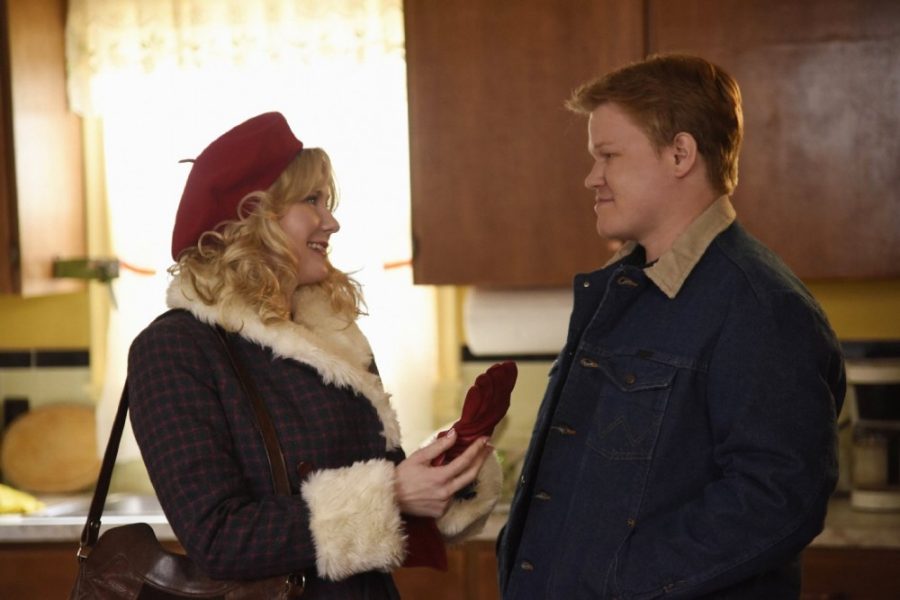Your search is finally over. Rejoice and be glad that FX’s “Fargo” has come to fill all of your hyper-compelling television drama needs.
As for many, the conclusion of “Breaking Bad” two years ago left me with a gap that no other drama properly filled, no matter where I turned. No show has captured that page-turner nature that “Breaking Bad” perfected. In 2015, page-turner is better described as a show that begets a just-one-more philosophy during a Netflix binge marathon lasting well past midnight.
There have certainly been contenders to the “Breaking Bad” throne: HBO’s “True Detective” with its eerie charm and McConaughey drawl, and later, Vince Gilligan’s return to the “Breaking Bad” universe with the stellar “Better Call Saul.” “Fargo,” just two episodes into its second season, looks like the best contender yet to fill that white-knuckle, adrenaline-depraved hole in your heart.
“Fargo” requires a brief dossier in order to explain the nature and origin of the show. The series is based on the Coen Brothers’ classic “Fargo,” a noir film bundled up in the dressings of polite, Midwestern Minnesota. “Fargo,” the television show, plays on the fact-or-fiction narrative of the film.
Both the film and television show begin with this text: “This is a true story. The events depicted … took place in Minnesota in [a year]. At the request of the survivors, the names have been changed. Out of respect for the dead, the rest has been told exactly as it occurred.” Don’t be fooled; all iterations of “Fargo” are 100 percent works of fiction.
As a television show, “Fargo” most closely resembles an anthology, with each season in the canon being quasi inspired by the previous iterations but is not a retelling or reboot of the original.
More so than specific plot points or events, each “Fargo” installment retains core themes and tones, such as an event that draws together a sprawling group of parties with conflicting interests, the moral degradation and strengthening of key characters and a family drama—all painted against the canvas of America’s politest playground: Minnesota.
The beauty of this anthology lies in the possibility for viewers to jump in at any point. Haven’t seen the original film? Doesn’t matter—start now. The same goes for missing out on the first season of the show; seeing the previous installment certainly adds to the experience, but it is not necessary to understanding or enjoying the show. The second season of “Fargo” wanders the farthest from its predecessors as it jumps back in time to 1979 to depict the “Sioux Falls incident.”
Two episodes in, “Fargo” break down into three storylines connected to one ghastly incident. The Kansas City Mafia is moving into town and looking to close shop on local family outfit the Gerhardts. The youngest Gerhardt, Rye (Kieran Culkin), gets involved in a dust-up at a local diner, and this shootout acts as the initial earthquake that sends reverberations throughout the second season.
While the Kansas City Mafia and the Gerhardts search for Rye, local law enforcement Lou Solverson (Patrick Wilson) investigates the diner shootout, and local couple Peggy and Ed Blumquist (Kirsten Dunst and Jesse Plemons, respectively) must deal with the aftermath of the diner incident. Showrunner Noah Hawley has kept the story streamlined: no character, plot or scene is wasted with screen time dalliance.
The star-studded cast of “Fargo” possesses a magnetic appeal.
This stable of thoroughbred actors is filled with well-known players, such as Dunst, Ted Danson, Nick Offerman and Brad Garrett, along with under-the-radar castings that shine, such as Jeffrey Donovan as the power-hungry eldest Gerhardt, Cristin Milioti as Lou Solverson’s cancer-stricken fireball of a wife, and Bokeem Woodbine as a Kansas City Mafia soldier. In particular, Plemons stands out with his portrait of a conflicted Midwestern butcher who’s in over his head.
Plenty of shows have a large cast of characters and interweaving stories to lure viewers in, but “Fargo” possesses cinematography and editing better than anything else on television. This is far and away the most cinematic television show in recent memory, with shots and scene transitions that I haven’t seen employed anywhere else on the small screen. Each shot and edit adds to the overarching tone of the show: an ominous premonition of threats on the horizon.
Perhaps the best sequence within the two episodes comes when Rye Gerhardt stalks a county judge. Church bells ring in the background as brief shots pop up, then fade to black. Rye then begins to follow the judge as a snazzy drum fills transitions to a highway shot of the judge tailed by Rye. As Rye closes in on the judge, the shot splits into two sections: one on Rye’s face as he concentrates on his target, the other individually showing the Gerhardt outfit.
This scene only lasts a minute or so, but it encapsulates so much of what “Fargo” gets right. The editing, cinematography and sound design of the scene makes the tone and subtext unavoidable; something bad is about to happen, and it will affect the future of the entire Gerhardt family.
If you are in the market for a post-“Breaking Bad” or “True Detective” fix, tune in to “Fargo.” Hawley has kicked the quality up a notch from last season and has moved into the territory of “best show on television,” bar none. Don’t miss out on this one.
Watch the darkness (and greatness) creeping through the frozen plains of “Fargo.”
Follow Alex Furrier on Twitter.









